Nobody is perfectly symmetrical; everybody has asymmetry and no two breasts are identical.
Sometimes this asymmetry is minimal and invisible to the untrained eye, sometimes it is more pronounced.
Because of a strong background in Breast Reconstruction after Breast Cancer, Dr. Jugenburg is well equipped to offer Reconstructive Cosmetic Surgery to women who’s breast asymmetry is significant and where simple procedures won’t do the job. Using principles learned from reconstructing breast cancer patients, Dr. Jugenburg is able to repair significant breast asymmetry, and create a more natural and symmetric looking chest.
No two breasts are identical. In some cases, it can be very obvious and cause women significant distress. Women with visible breast asymmetry truly feel that they have an embarrassing deformity, resulting in a very negative body image, low self-esteem, and an inability to open up sexually. It is only natural for all women, to want their breasts to look normal, to be able to wear fitted clothing and bathing suits that follow their feminine contours. Reconstructive Cosmetic Breast Surgery performed by Dr. Jugenburg helps to improve your breast shape and symmetry. This is a more intensive procedure than a simple breast augmentation or a breast lift, involving principles of breast reconstruction in a cosmetic surgery patient.
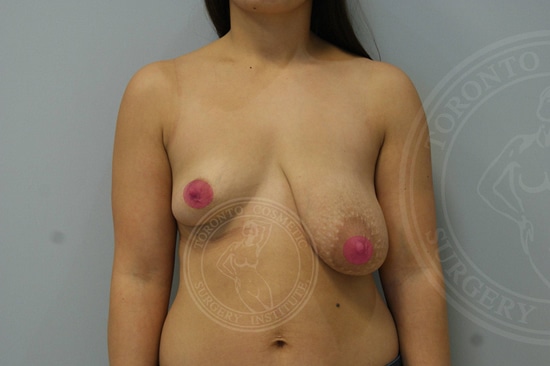
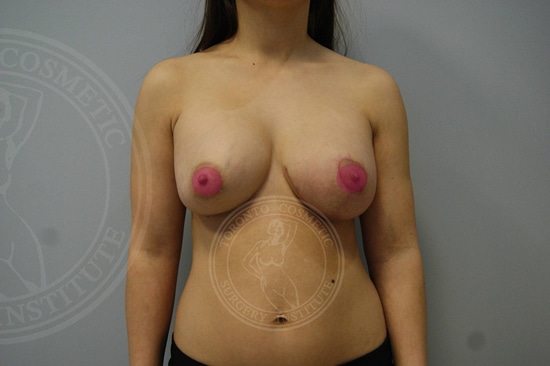
Right breast augmentation, left breast implants with a lift and reconstruction.
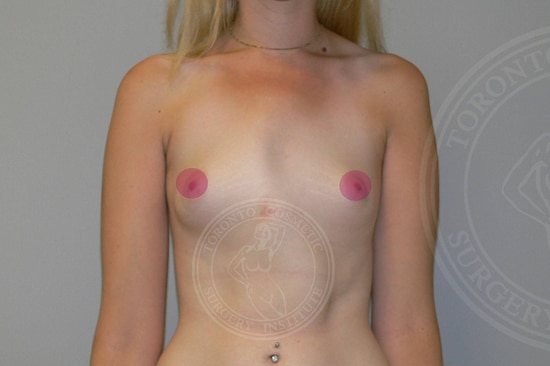
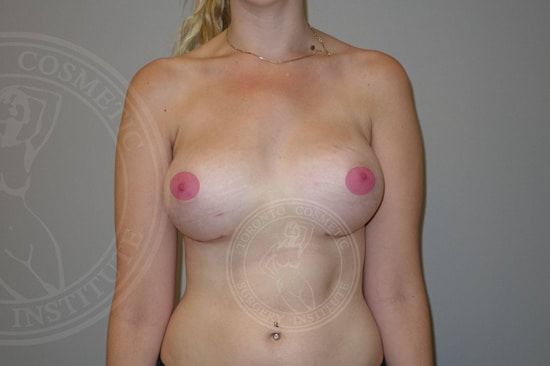
Significant chest wall asymmetry (pacts carinatum corrected using asymmetric implants: 540cc on the left and 390cc on the right) through a breast fold incision, under the muscle, saline implants.
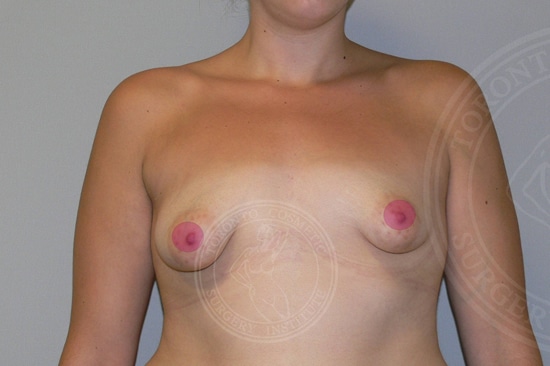
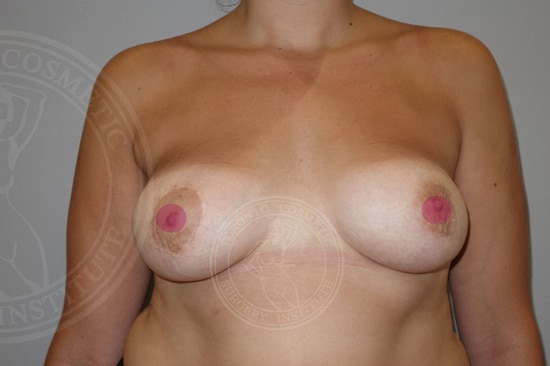
Asymmmetric tuberous breasts treated with Reconstructive Breast Augmentation using saline breast implants (460cc left, 420cc right) and a reconstructive breast lift.
Woman of all ages have breast asymmetry; although, women with minimal asymmetry will likely be unaware of the slight unevenness between their breasts. Typically, right and left breasts may differ in size, position, orientation, and the size and shape of the nipples.





Some women also have breast asymmetry as a result of a rib abnormality. In this case, the ribs are deficient or very prominent on one side, which in turn affects the size of the breast. A woman with a prominent rib on one side, for example, will also have a breast that appears larger on that side.
There are several things that can be done to improve breast symmetry during Breast Augmentation surgery. Simple breast asymmetries can be addressed during a routing cosmetic breast surgery. Using different implants, or slight modifications of the breast tissue can be done. More severe asymmetries may require a more reconstructive approach.
Using two different breast implants (to make the large breast smaller, or the smaller breast larger) is the simplest approach, yet choosing just the right combination of implants requires much experience, skill and cosmetic artistry.
Saline breast implants are useful for this purpose, as the right and left implants can be filled differently at the time of surgery to more precisely adjust for any mild asymmetry. More complicated procedures are required to correct breast shape and position asymmetry, and may require multiple stages of reconstruction. A larger breast often needs a Breast Reduction and Breast Lift to match the opposite breast.
In addition, the larger breast often has a larger areola, which also needs to be reduced in size to provide better symmetry.
During your Breast Augmentation consultation at the Toronto Cosmetic Surgery Institute, Dr. Jugenburg will examine your existing breast anatomy and discuss with you the options that may be available to improve your breast asymmetry. However, the intention will not be to give you a perfectly symmetrical chest, but a beautiful breast enhancement that gives the impression of a more symmetrical chest.
Reconstructive Cosmetic Breast Surgery is a more advanced approach for the moderate to severe asymmetry. Breast tissue, skin and the nipple/areola require a more complicated reconstruction. Your natural breast tissue must be reshaped and re-arranged. These procedures take longer and the recovery is also more critical than in straightforward cosmetic breast surgery.
Mammograms are an important diagnostic tool for women to screen themselves for breast cancer. According to the National Cancer Institute, women in their 40s and older should have mammograms every 1 to 2 years. The purpose of routine screening is to find developing cancer of the breast as early as possible. Early detection usually means more effective treatment, which can save lives. It can also contribute to a better quality of life by reducing the need for radical treatments.
The risk of breast cancer does not differ in women with breast implants compared to other women.
Breast implants also do not prevent women from being screened for breast cancer. Women who are in an age group where routine mammograms are recommended, should have them done regardless of whether or not they have implants. Women considering breast implants should be aware of potential issues with mammography in order to make an informed decision. Breast implants may require special views for the detection of cancer and breast compression (hard pressure) during screening is associated with a very small risk of implant rupture/deflation.
Breast Implants do not prevent breast cancer detection.
Women with augmented or reconstructed breasts should inform their Radiologist of their implants. Whilst special care can be taken by the Radiologist to reduce the risk of breast implant rupture during compression, other techniques are used to maximize what is seen of the breast tissue during screening. Alternative implant displacement views (or Eklundviews) must be imaged, in addition to those views imaged during routine mammograms, in order to isolate the breast tissue. Since it will take more time to screen more views of the breast, women with breast implants should also notify the receptionist upon making their appointment that they have implants.
The displacement procedure involves pushing the implant back and pulling the breast tissue into view. There are several factors that may affect the success of this special technique in imaging the breast tissue. These include the location of the implant, the hardness of the breast capsule (the scar tissue around an implant), and the amount of the breast tissue compared to the implant size. Sometimes it is hard to distinguish the difference between scar tissue and a tumor, and a biopsy may have to be done to ensure that a detected mass is not cancerous. This can usually be done without removing the implant.
Some women who have undergone Breast Reconstruction will have some breast tissue remaining, whilst others will have had all of their breast tissue removed. It is important that a woman with remaining breast tissue continue to have mammograms of the reconstructed breast, as well as of the other breast, to detect breast cancer. Those who have had breast cancer surgery on both breasts (a double mastectomy) should ask their doctors whether mammograms are still necessary. In all cases, this will depend on the extent of breast tissue that was removed.